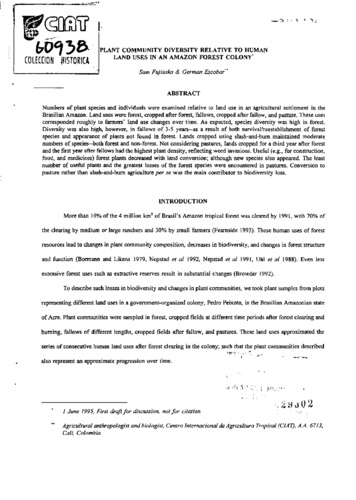Plant community diversity relative to human land uses in an Amazon forest colony
Numbers of plant species and individuals were examined relative to land use in an agricultural settlement in the Brasilian Amazon. Land uses were forest, cropped after forest, fallows, cropped after fallow, and pasture. These uses corresponded roughly to farmers` land use changes over time. As expected, species diversity was high in forest. Diversity was also high, however, in fallows of 3-5 years--as a result of both survival/reestablishment of forest species and appearance of plants not found in forest. Lands cropped using slash-and-burn maintained moderate numbers of species--both forest and non-forest. Not considering pastures, lands cropped for a third year after forest and the first year after fallows had the highest plant density, reflecting weed invasions. Useful (e.g., for construction, food, and medicines) forest plants decreased with land conversion; although new species also appeared. The least number of useful plants and the greatest losses of the forest species were encountered in pastures. Conversion to pasture rather than slash-and-burn agriculture per se was the main contributor to biodiversity loss

